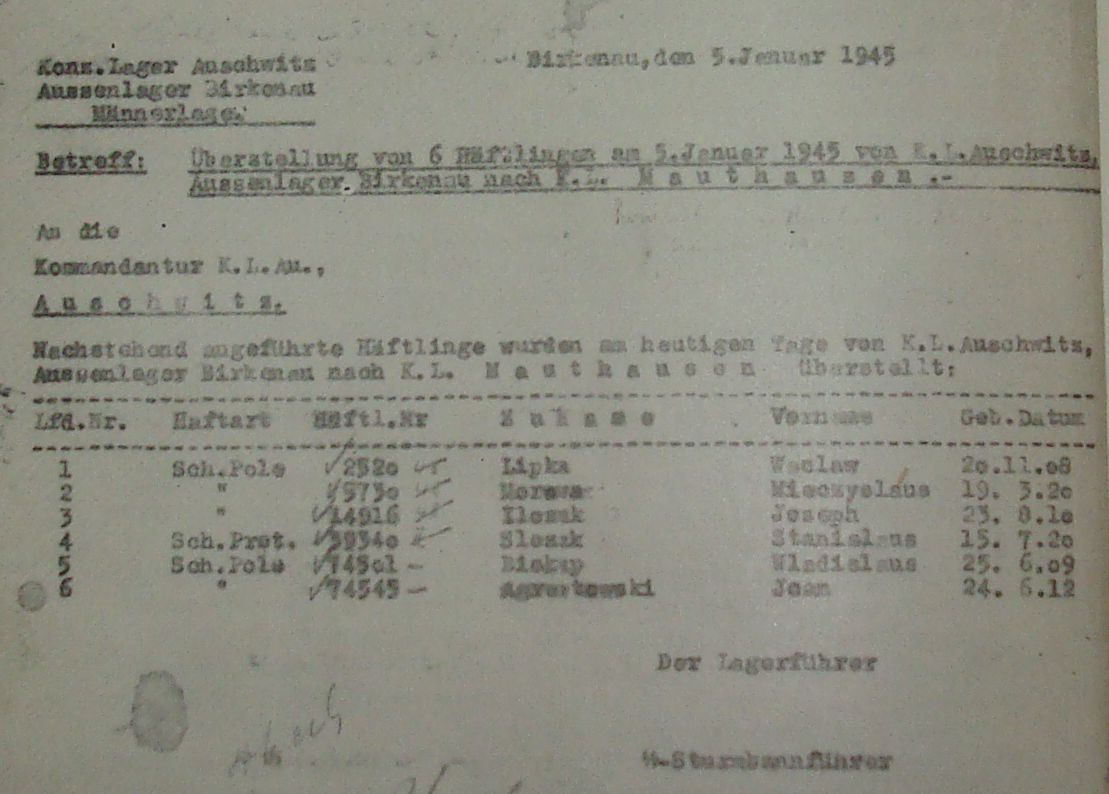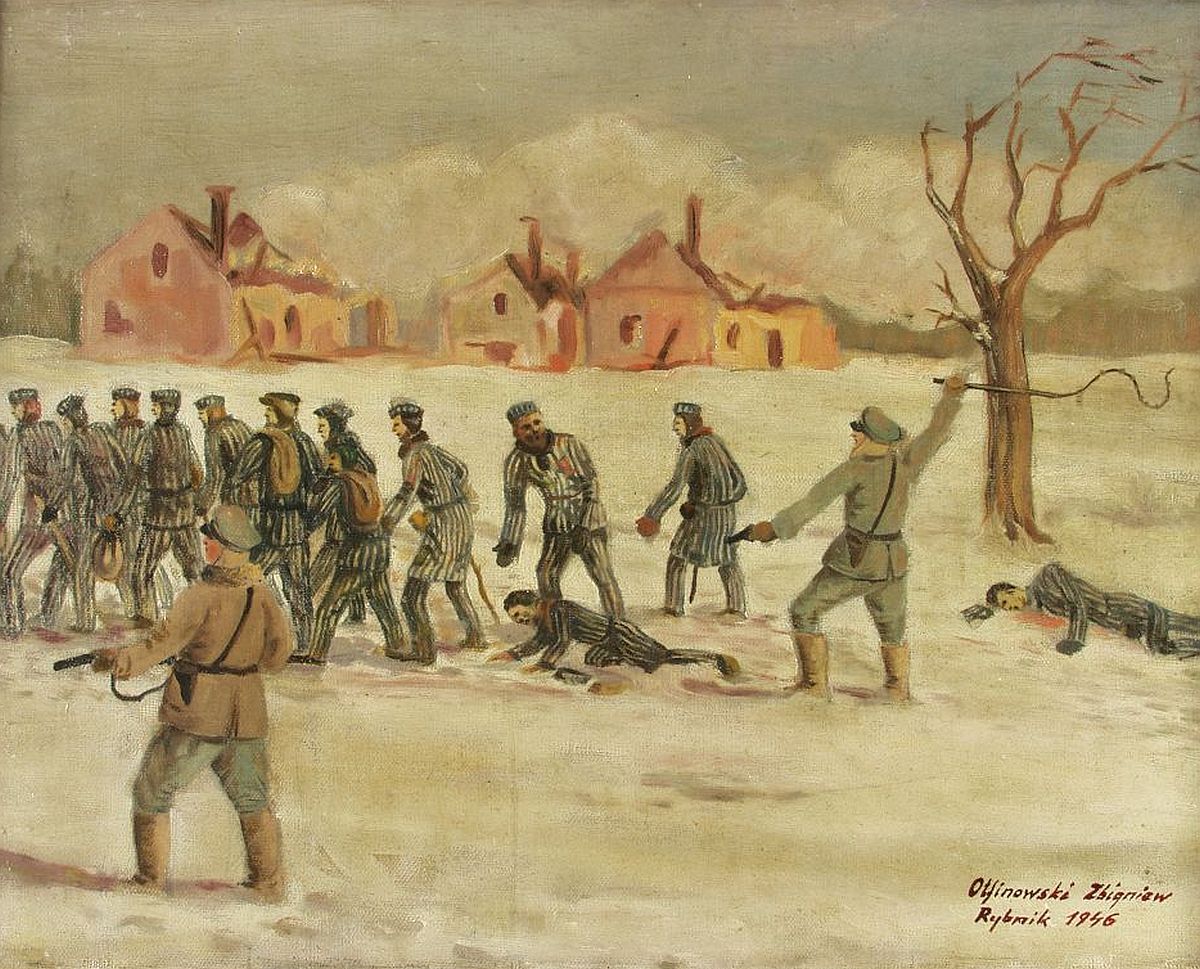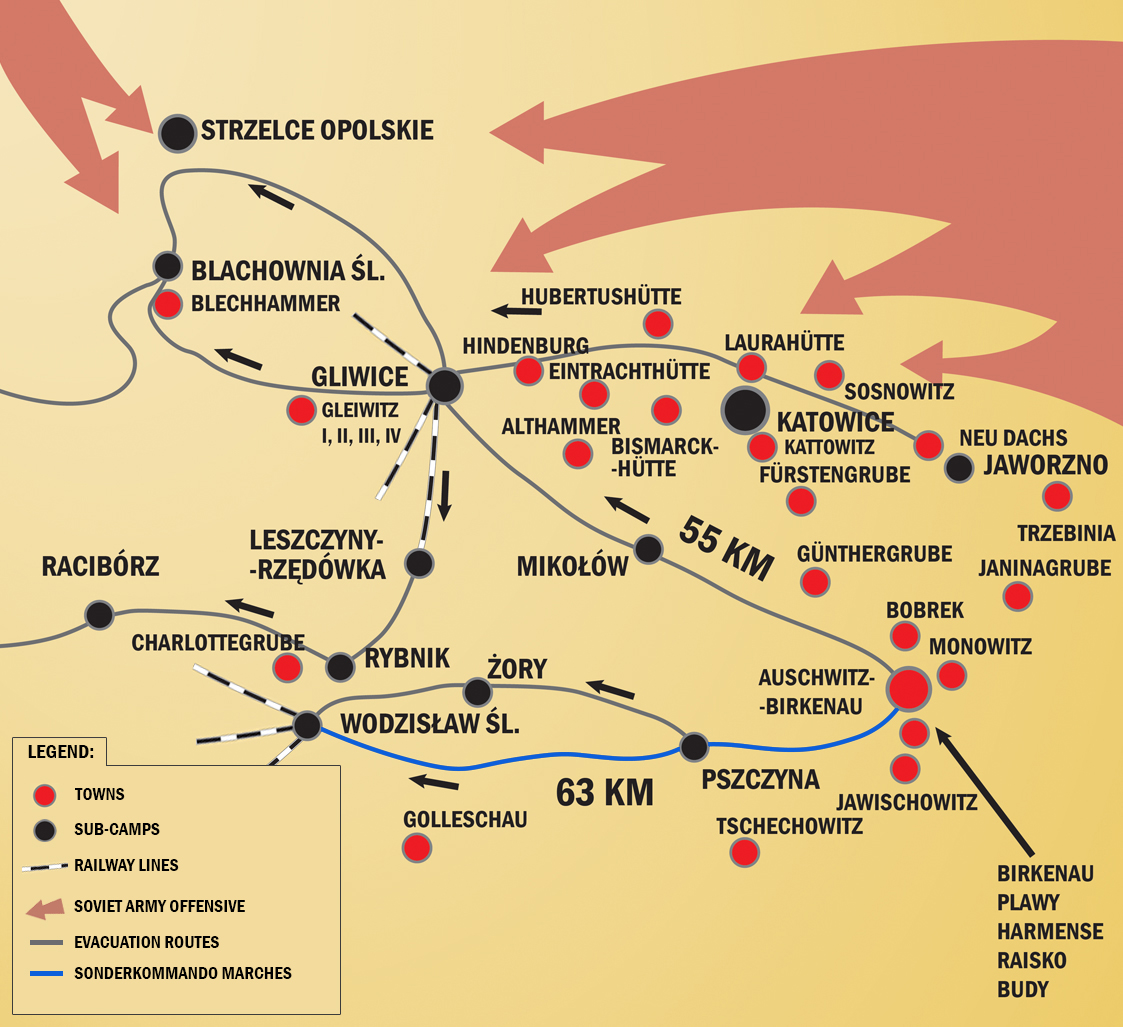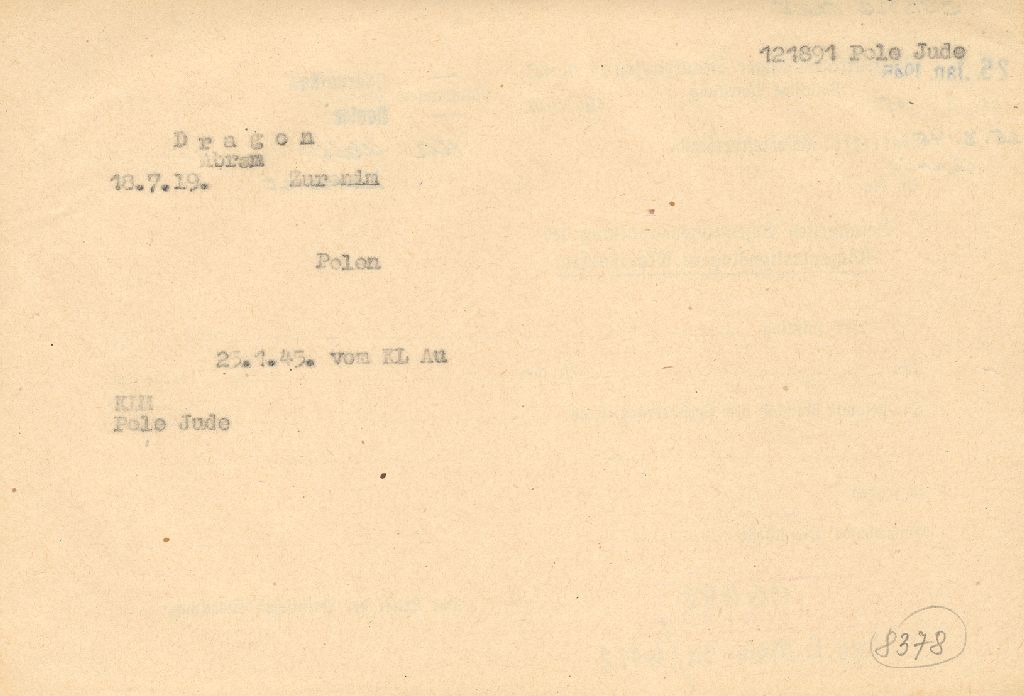In November 1944, the mass extermination of Jews at Auschwitz was stopped. The SS authorities decided to dismantle the crematoria at Birkenau. Sonderkommando prisoners were employed in dismantling the equipment and buildings of crematoria II, III and IV. At the same time dozens of them continued to operate the still active crematorium V. On 28 November 1944, during the subsequent selection 70 Sonderkommando prisoners were taken away in an unknown direction. What happened next also remains unknown. From the remaining, the Polish prisoners employed previously in crematorium I before it was transferred to Birkenau were separated from the rest and at the beginning of January 1945 transferred to Mauthausen concentration camp. They were executed two weeks before the camp’s liberation in May 1945.
The very last 100 Sonderkommando prisoners remained in Auschwitz until its final evacuation on 18 January 1945. On that day, together with other Auschwitz inmates, they participated in a ‘death march’ towards Wodzisław Śląski, where railway transports to the German Reich interior were organised from.
During the ‘death march’ several Sonderkommando prisoners managed to escape, including Henryk Tauber, Shlomo Dragon, Eliezer Eisenschmidt, Henryk Mandelbaum and Alter Fajnzylberg, aka Stanisław Jankowski. Thanks to the help of local inhabitants they were able to survive until the arrival of the Red Army. Many of the Sonderkommando members who did not manage to escape during the march managed to mix up with other groups of prisoners and thus tried to conceal their identities. In many cases this ploy worked, as some 40‒50 Sonderkommando members survived the war.




